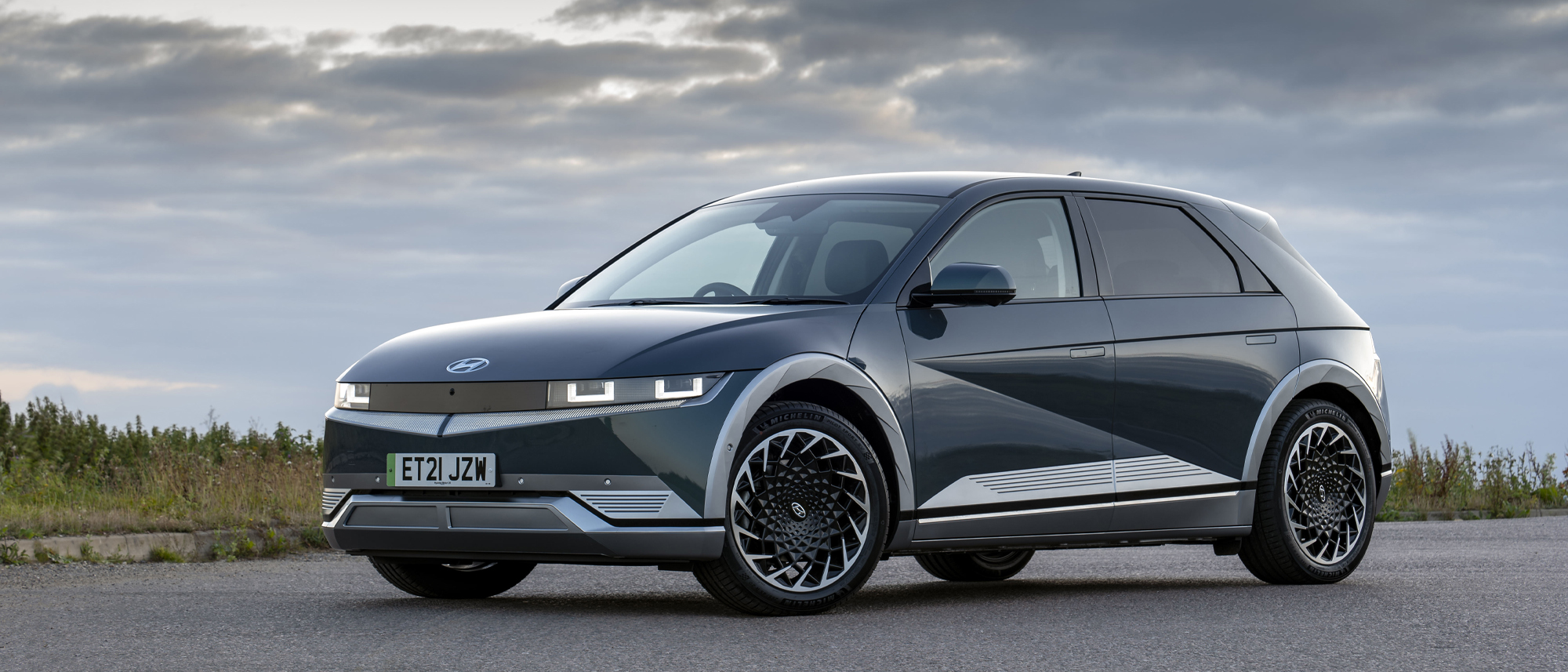Tom's Guide Verdict
If you’re in the frame for an electric car then this model makes a brilliant all-round option. It’s got enough space to appeal to families, but the design and on-board tech makes it inviting to just about anyone. Even in its base spec the Hyundai IONIQ 5 is nicely fitted out. However, splurge on the options and you’ll get an EV that’s fully loaded in the tech department.
Pros
- +
Great looks
- +
Tons of tech
- +
Practical design
- +
Excellent performance
- +
Solid range
Cons
- -
Expensive to buy
- -
No rear wiper
Why you can trust Tom's Guide
Release date: Available now
Price: From $39,700; Approx $66,000 as tested
Power: Single motor RWD / Dual motor AWD
Horsepower: Up to 301 bhp
Battery range: up to 300 miles (EPA)
Charging speed: Up to 350 kW
Top speed: 115 mph
0-60: Up to 5.2 seconds
Smarts: Head up display, wireless charging, Surround View Monitor, mood lighting
When it comes to looks, then the Hyundai IONIQ 5 has to be one of the most interesting all-electric arrivals we’ve seen to date. It’s been designed from scratch and is based on Hyundai’s new Electric Global Modular Platform, or E-GMP for short. The result is an EV that ticks all of the boxes for just about anyone that wants to enjoy everything the electric car has to offer, all topped with a nice thick slice of innovation.
Interestingly, the Hyundai IONIQ 5 is bigger than you think – it actually looks and feels more like a super sized saloon. Park up alongside similarly styled vehicles and you immediately notice the difference thanks to the 118.1-inch wheelbase.
It’s slightly smaller than a Ford Mustang Mach-E, but you don't get the bulk of SUV styling, and we’d peg the Volkswagen ID.4 as a more direct competitor. Both in terms of what it delivers and its similarly striking appearance. It’s kinda chunky, but without looking or feeling that way.
I recently got to try the IONIQ 5 Ultimate 73KWH RWD+, which had every option going — including a very impressive array of tech features and the stylish Phantom Black Pearl paint finish.
Hyundai IONIQ 5: Release and pricing
There are four variants to choose from in the U.S., the SE Standard Range, SE, SEL and Limited. In the U.K. and Europe choice is limited to three model variants, the SE Connect, Premium and Ultimate.
Pricing starts at $39,700 (minus taxes and fees) for the SE Standard Range, while the SE and SEL start at a respective $43,650 and $45,900. The Limited variant is the most expensive, with a starting price of $50,600.
The IONIQ 5 is available to purchase in the U.K. right now. Hyundai has also started its deliveries in the U.S., but at the time of writing online reservations are closed. Contact your local Hyundai dealer to see what your options are.
Get instant access to breaking news, the hottest reviews, great deals and helpful tips.
Hyundai IONIQ 5: Design and style
For my money the Hyundai IONIQ 5 looks even better than its close rival the Volkswagen ID.4. Thanks to modern production techniques and materials the car is also much closer to the Concept 45 model that proved to be a firm favourite at the Frankfurt auto show a couple of years ago. The front of the IONIQ 5 really helps it stand out from the crowd, and that feeling is recreated at the back of the car too.
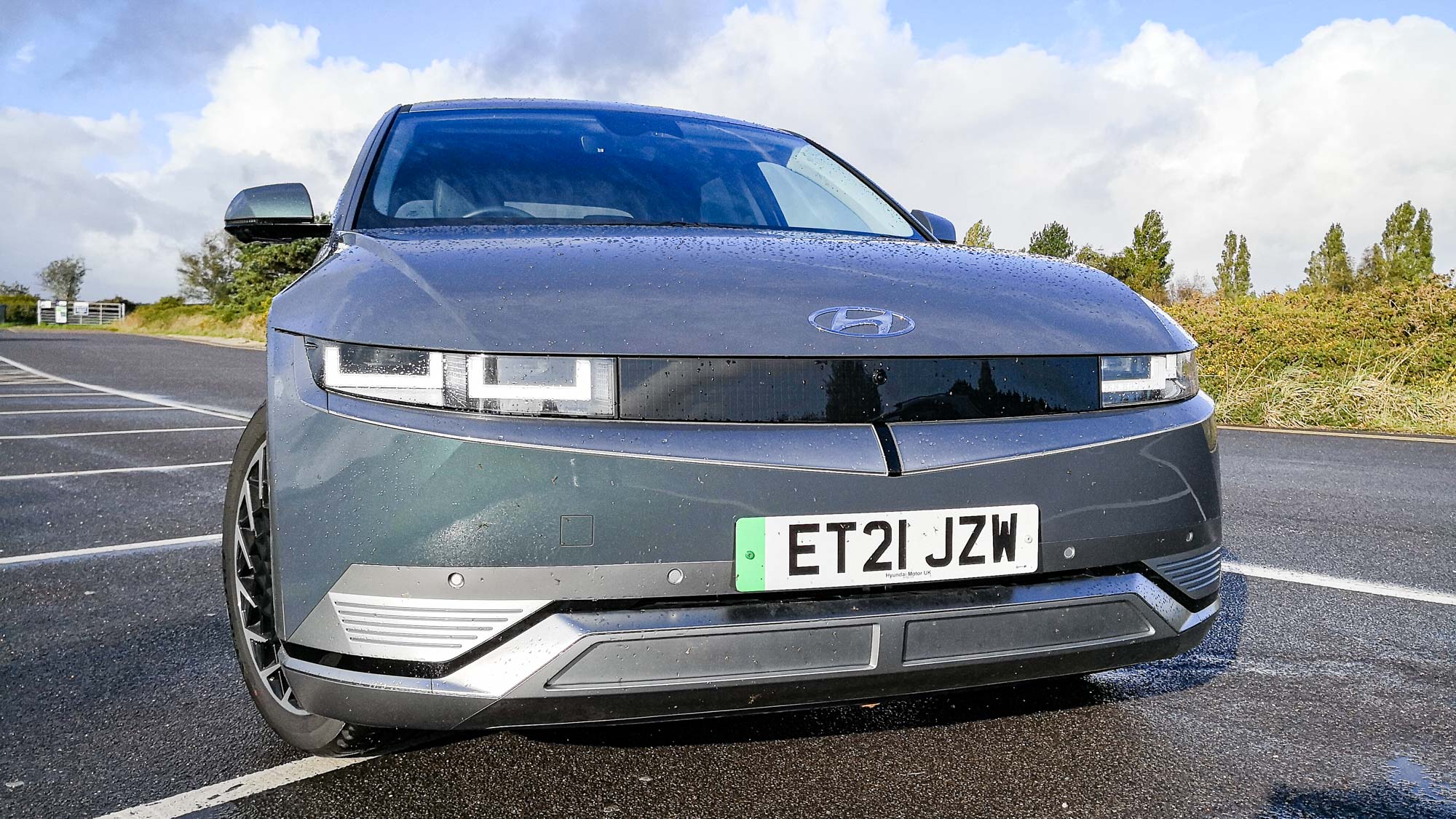
Those LED headlights are striking thanks to 256 cubic pixels being present within the design. The taillights follow a similar theme, giving the car a very distinctive and instantly recognisable appearance.
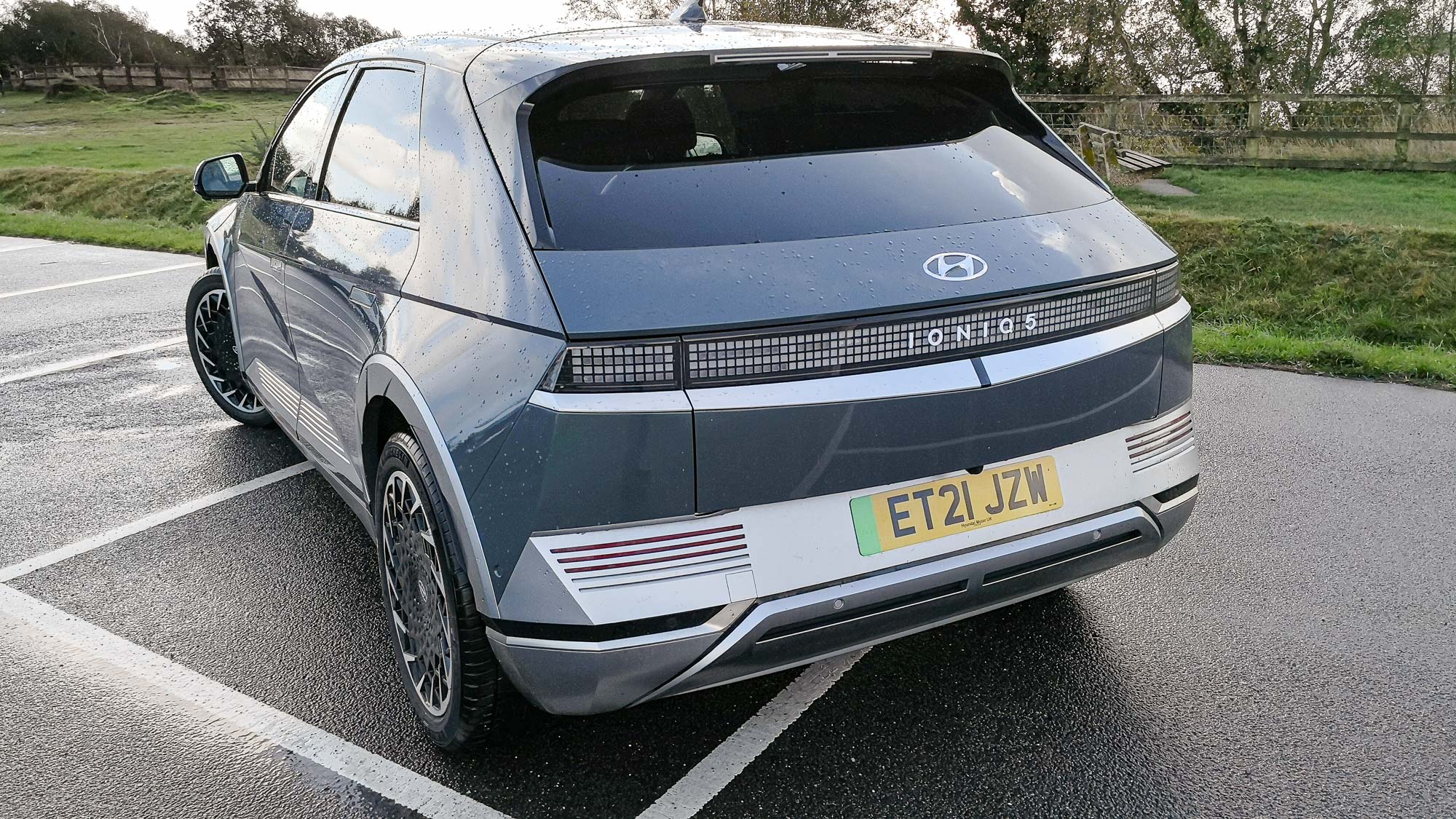
Our test car came fitted with sizeable 20-inch alloy wheels, although you’ll have a set of 19-inchers if you opt for one of the cheaper models.
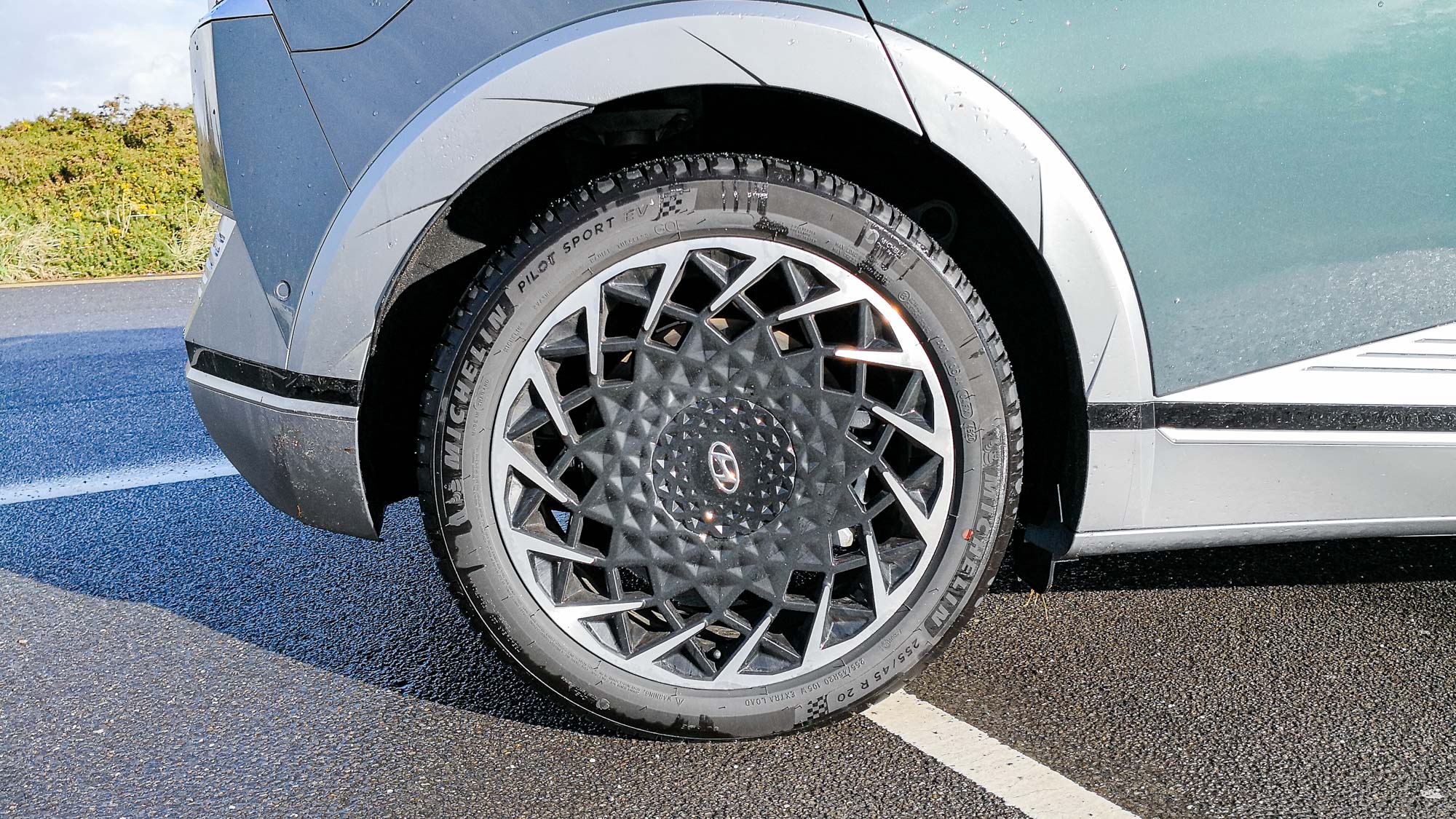
The recessed door handles are neat and aid the streamlined design of the IONIQ 5, as does the rear window overhang. Actually, the more you look around it the more you see clever little design touches.
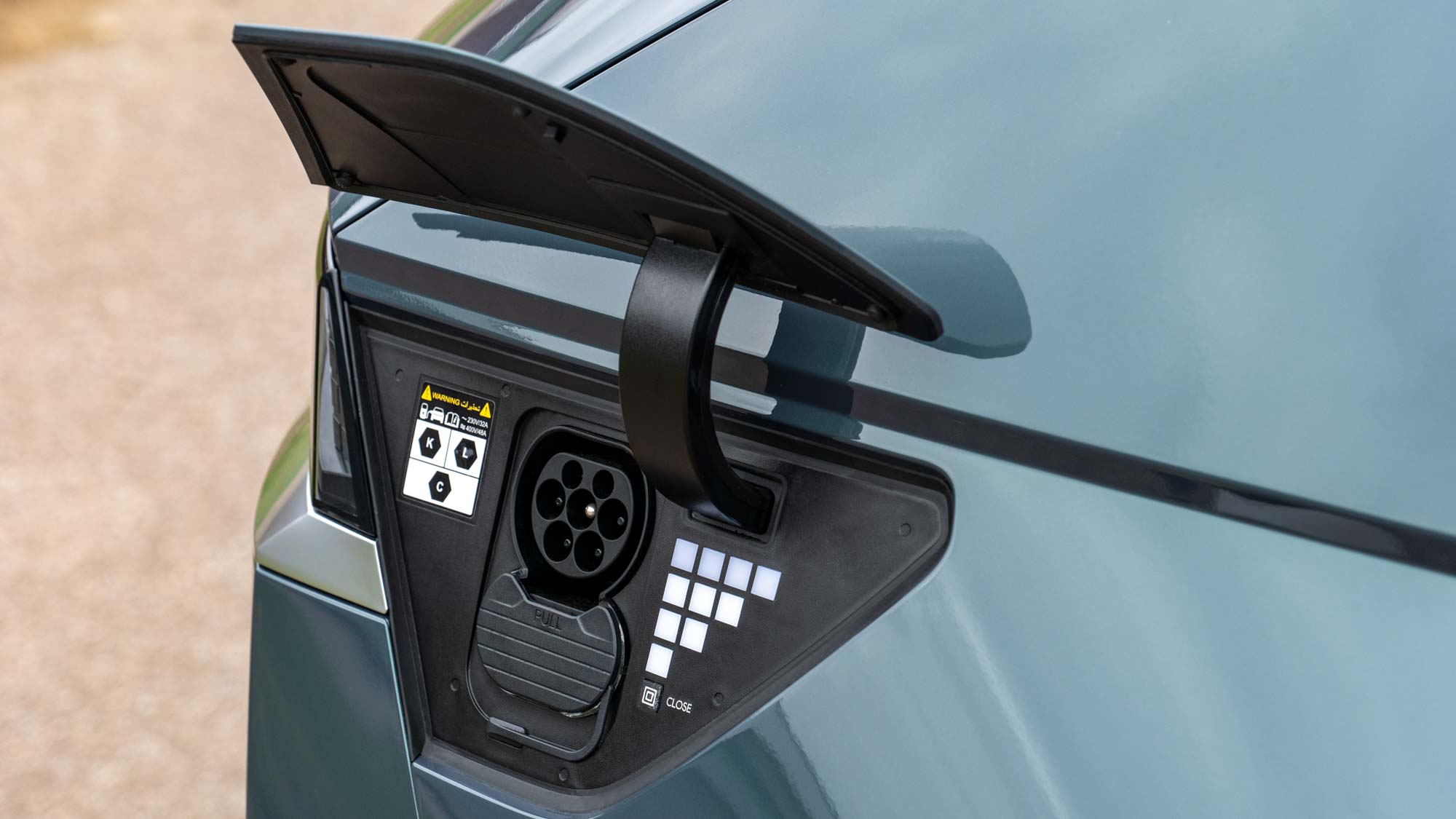
The recharging port, for example, opens to reveal a matrix of LEDs that indicate how much charge is available. And there’s an extra little bit of storage under the hood, in case you need it.
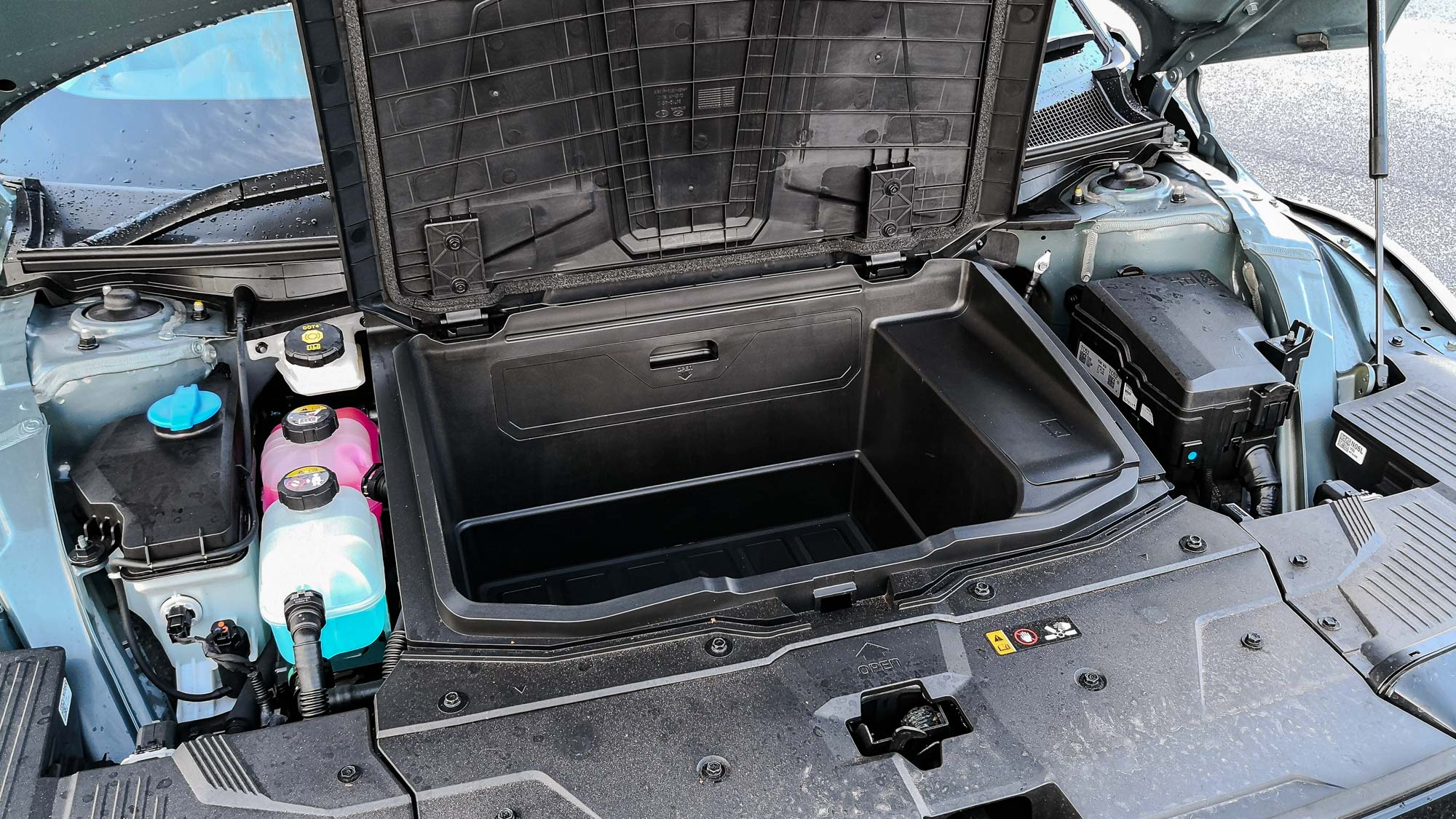
Hyundai has come up with a suite of other colors for this innovative vehicle too, with Gravity Gold Matte and Shooting Star Grey Matte a couple of other solid options. Mind you, the 9 options are all basically subdued darker colors, so you’re out of luck if you fancy something vibrant to show off your new purchase.
Hyundai IONIQ 5: Performance
The Hyundai IONIQ 5 might be seen as a family saloon but, like most other electric cars, there’s a decent amount of power on tap. In fact, you get a 0 to 60 time of just 5.2 seconds thanks to the 301 bhp inside the most powerful model. More importantly, in terms of the excitement factor, there’s 605 Nm metres of torque, which means the IONIQ 5 is very quick off the mark.
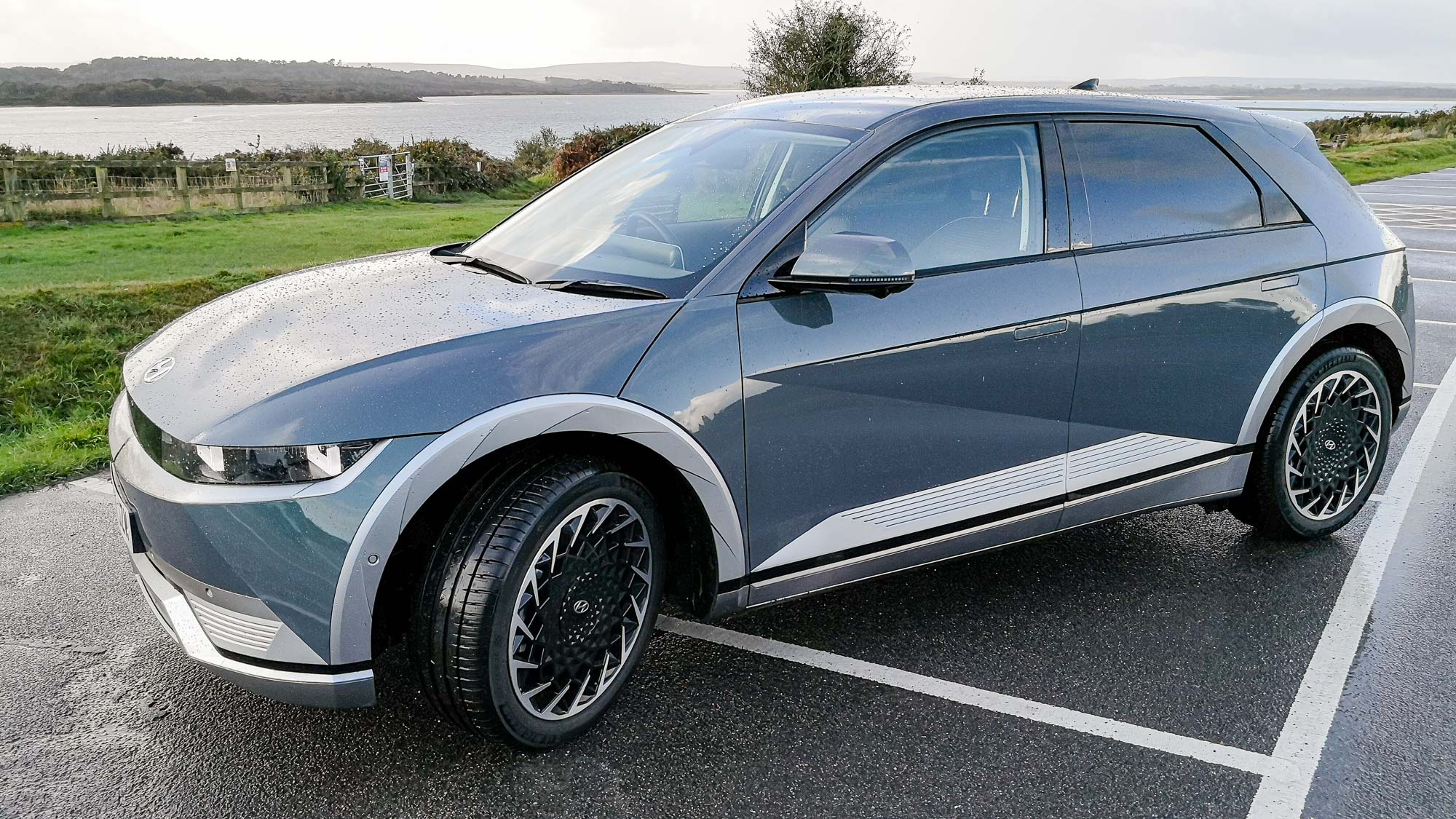
If you’re looking to shave a little off the asking price there’s a smaller battery option, 58 kWh and 168bhp with rear-wheel drive only to go for. That’ll still get you from 0 to 6 mph in 8.5 seconds. The middle model, and the one I drove, comes with rear-wheel drive but has 217bhp and a chunkier 73 kWh battery. That lowers the 0 to 60 mph figure down to 7.4 seconds. Whichever model you select though the top speed is 115 mph, which is more than enough for most users.
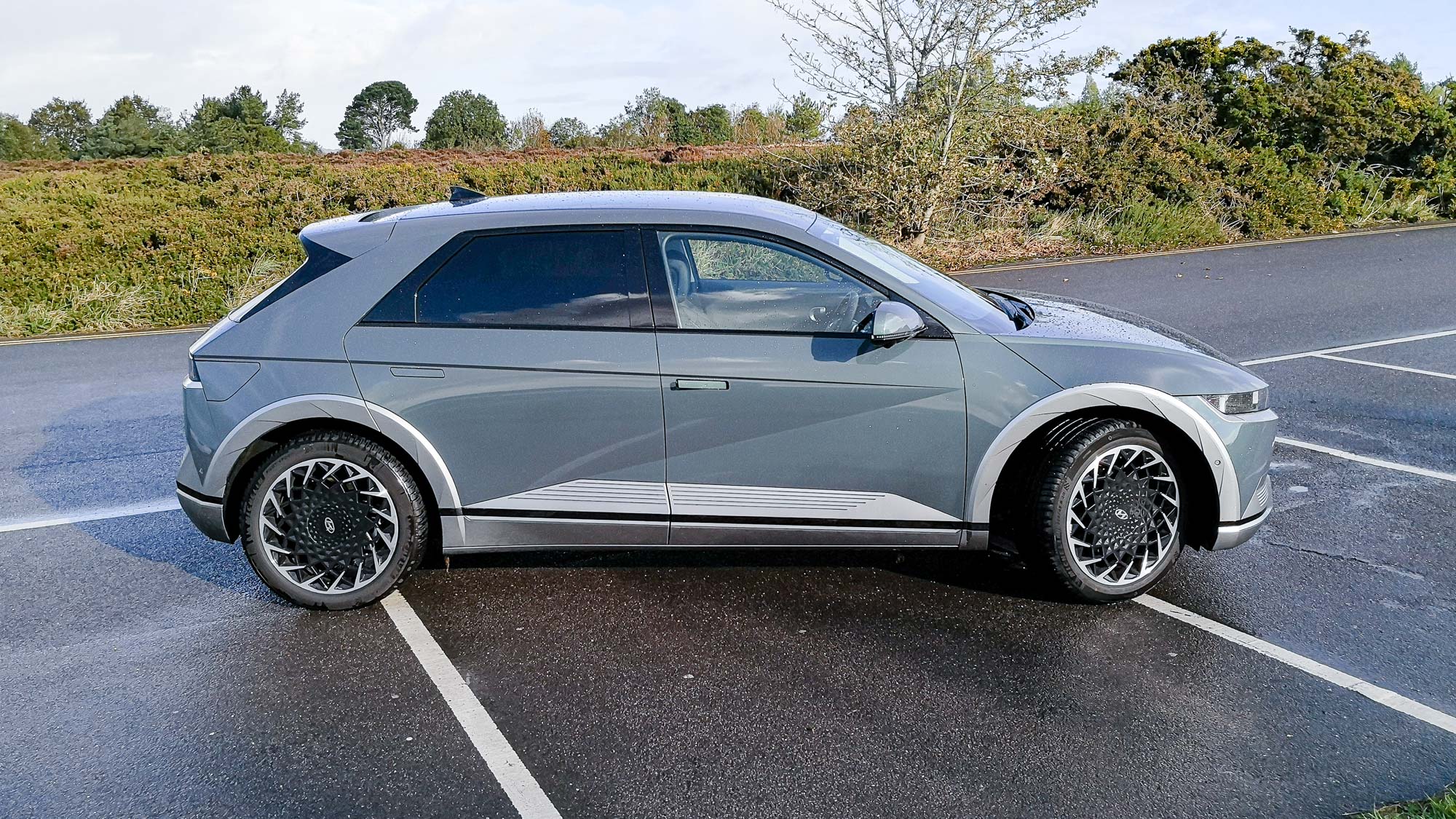
Out on the road Hyundai’s IONIQ 5 is a joy to drive. Unsurprisingly it’s whisper quiet, even with 20-inch rims but it’s also sprightly when you need it to be. In fact our test model was very quick away from lights and, with Sport mode selected, the drive became surprisingly dynamic while pushing the car through tight rural roads.
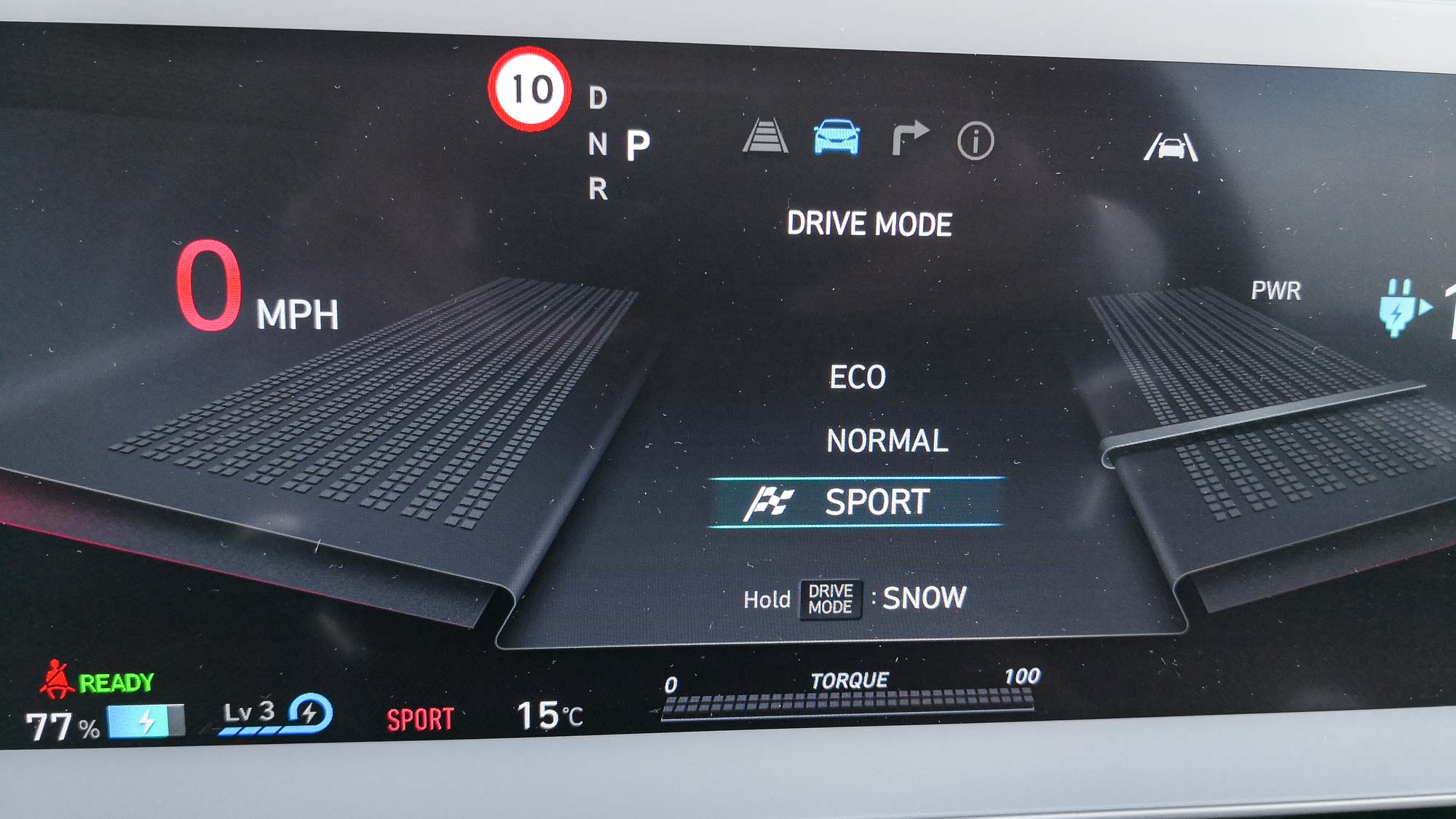
On the highway the car settles down and gets the job done with no fuss, but there’s still plenty of power on tap for whenever you need to get past the drivers that are driving at annoyingly low speeds.
Hyundai IONIQ 5: Interior
The Hyundai designers clearly spent a lot of time working on the interior of the IONIQ 5 and there are some really neat touches to look out for as you discover its charms.
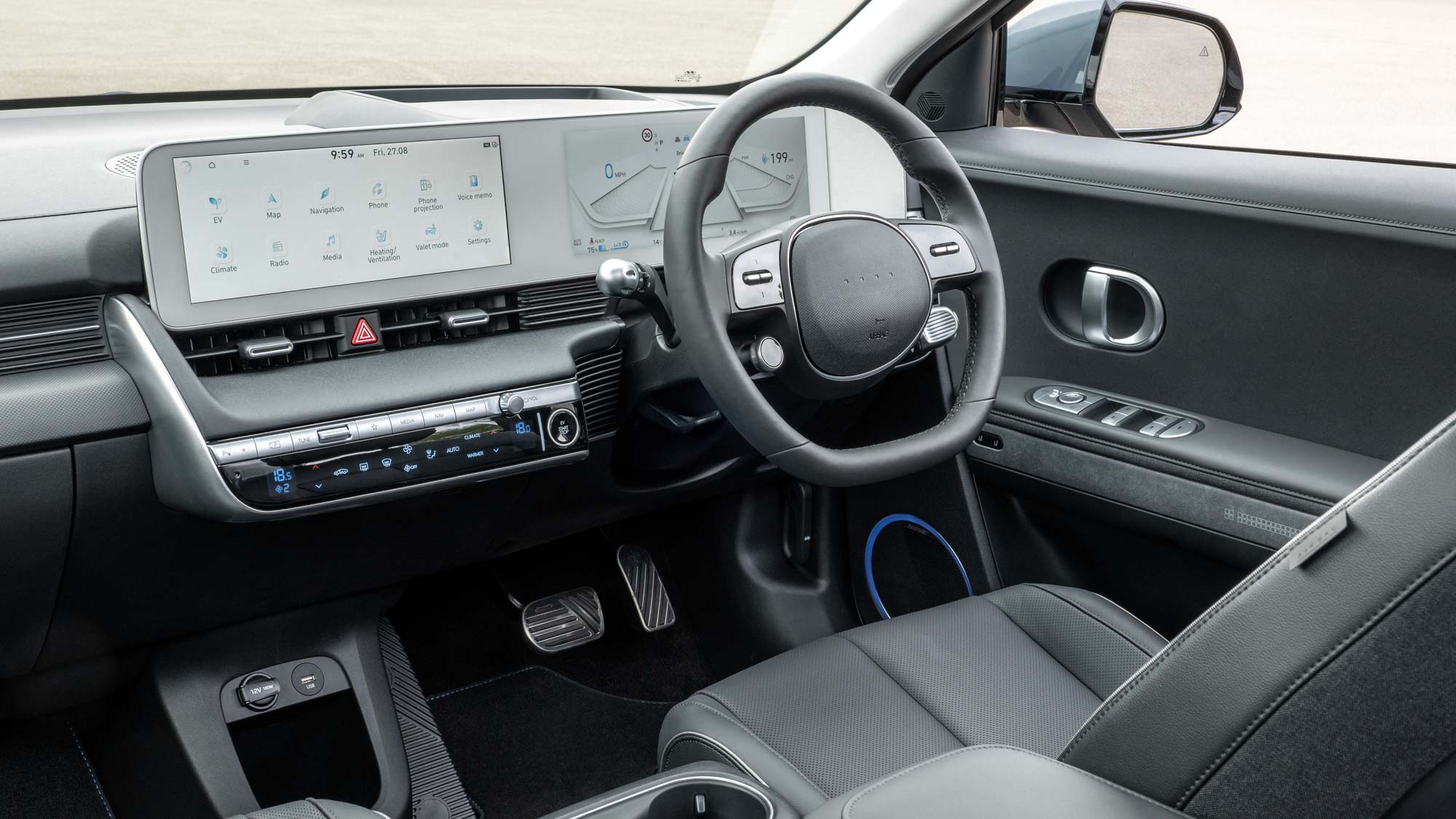
One of the weirdest things about this car is the feel of the interior space. Despite the saloon design, the inside is very sizeable. Again, much of this is down to the clever design, like the way there’s no central binnacle — save for a sliding armrest and storage idea. This can be moved backwards and forwards as desired, and it’s a great trick.
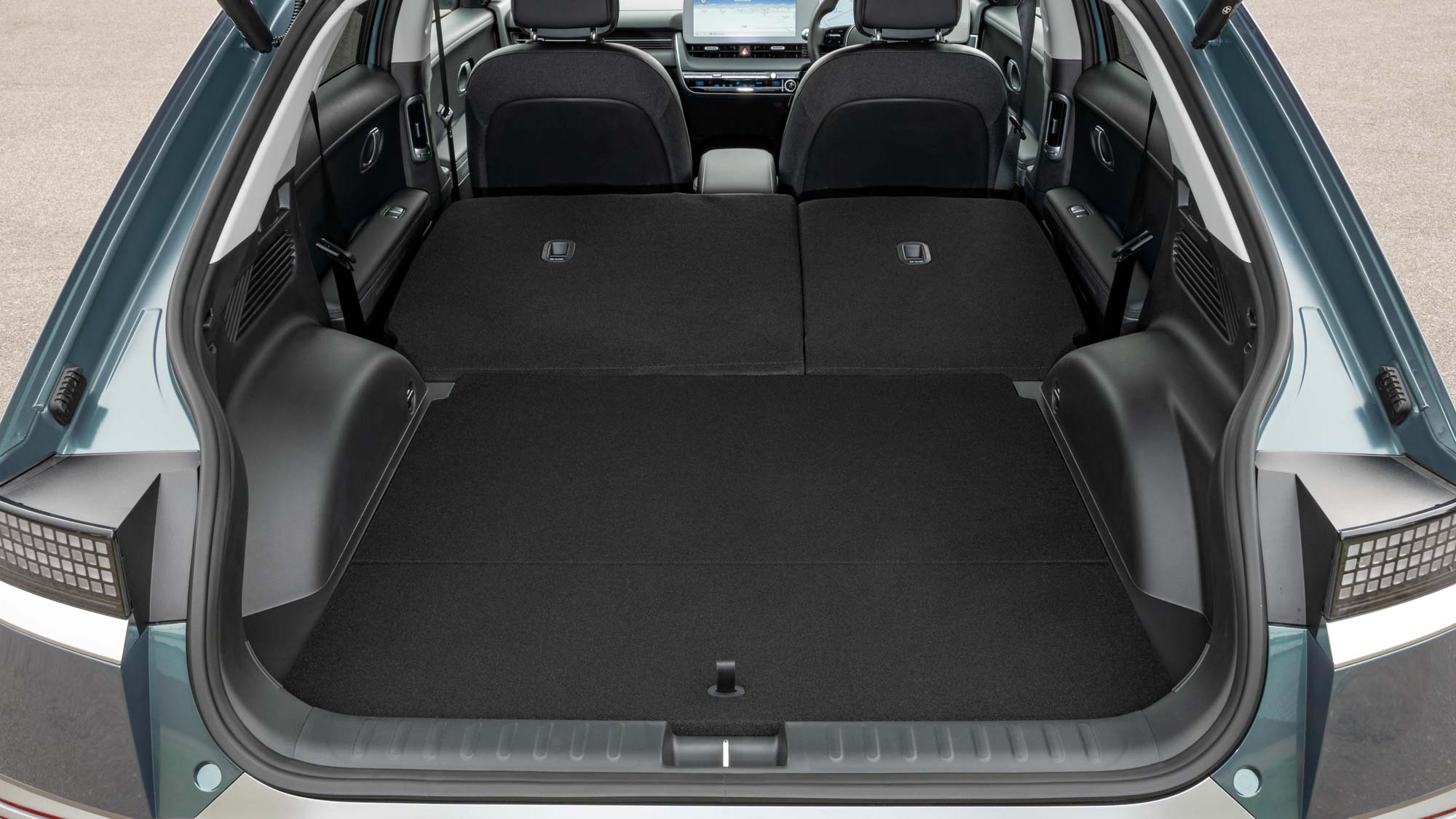
And, because the drive mode selector is on the steering column, there’s no transmission tunnel or shifter to worry about. So you’ve effectively got a flat floor from door to door in the front.
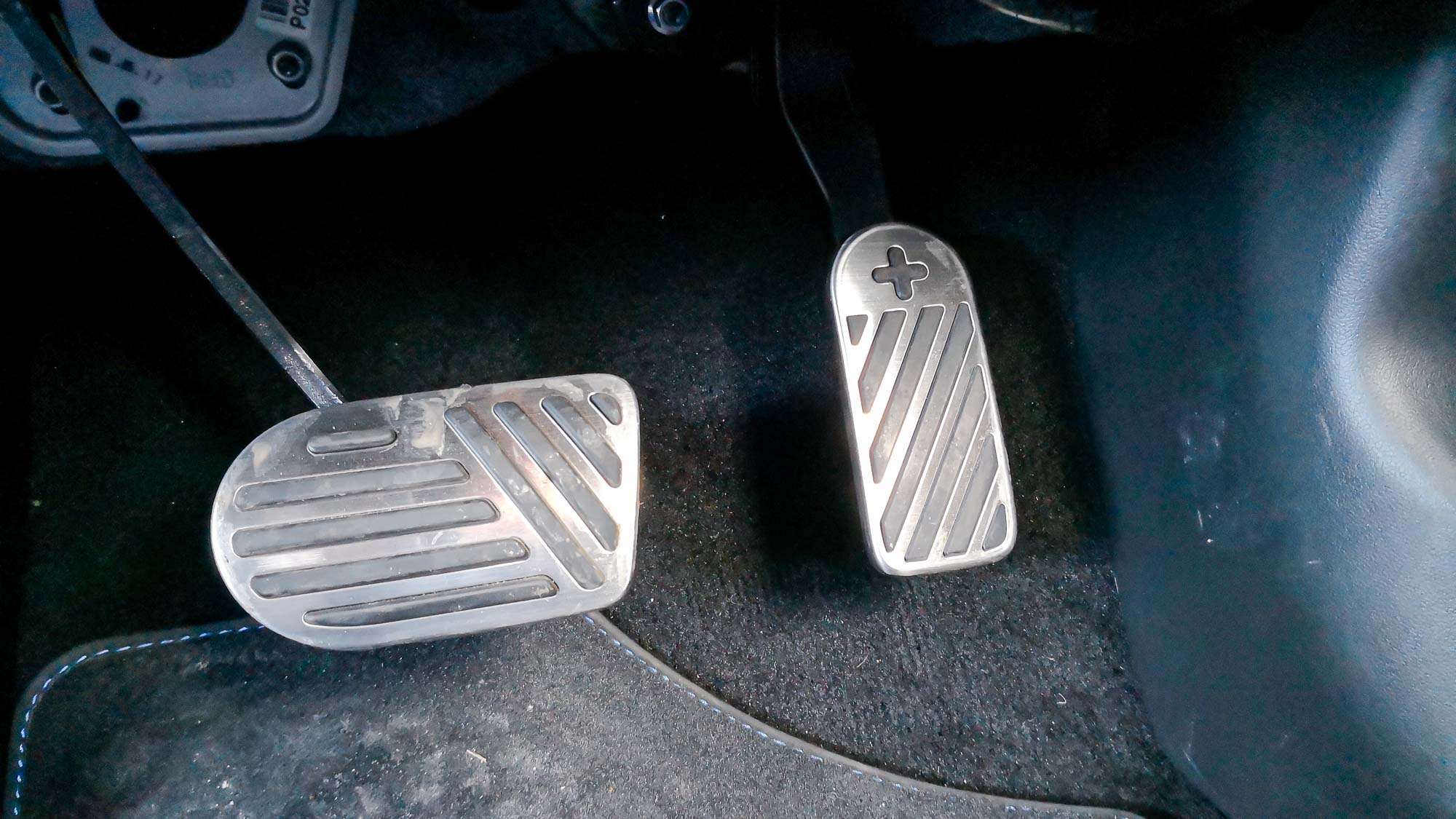
If you’re parked up you can actually put your feet across the gap to stretch out and have a nap. The reclining front seats make that an even more enticing proposition too.
While the interior appears quite minimalist the way it’s been designed, the more time you spend in it actually reveals just how much practicality there is. Hyundai has also done a little more for the planet, and manufactured many components from more sustainable materials.
A common gripe with many cars is that touchscreens have taken over, often while sacrificing functionality. Hyundai’s IONIQ 5 strikes a neat balance on that front. Indeed, the climate settings can be tamed thanks to traditional controls.
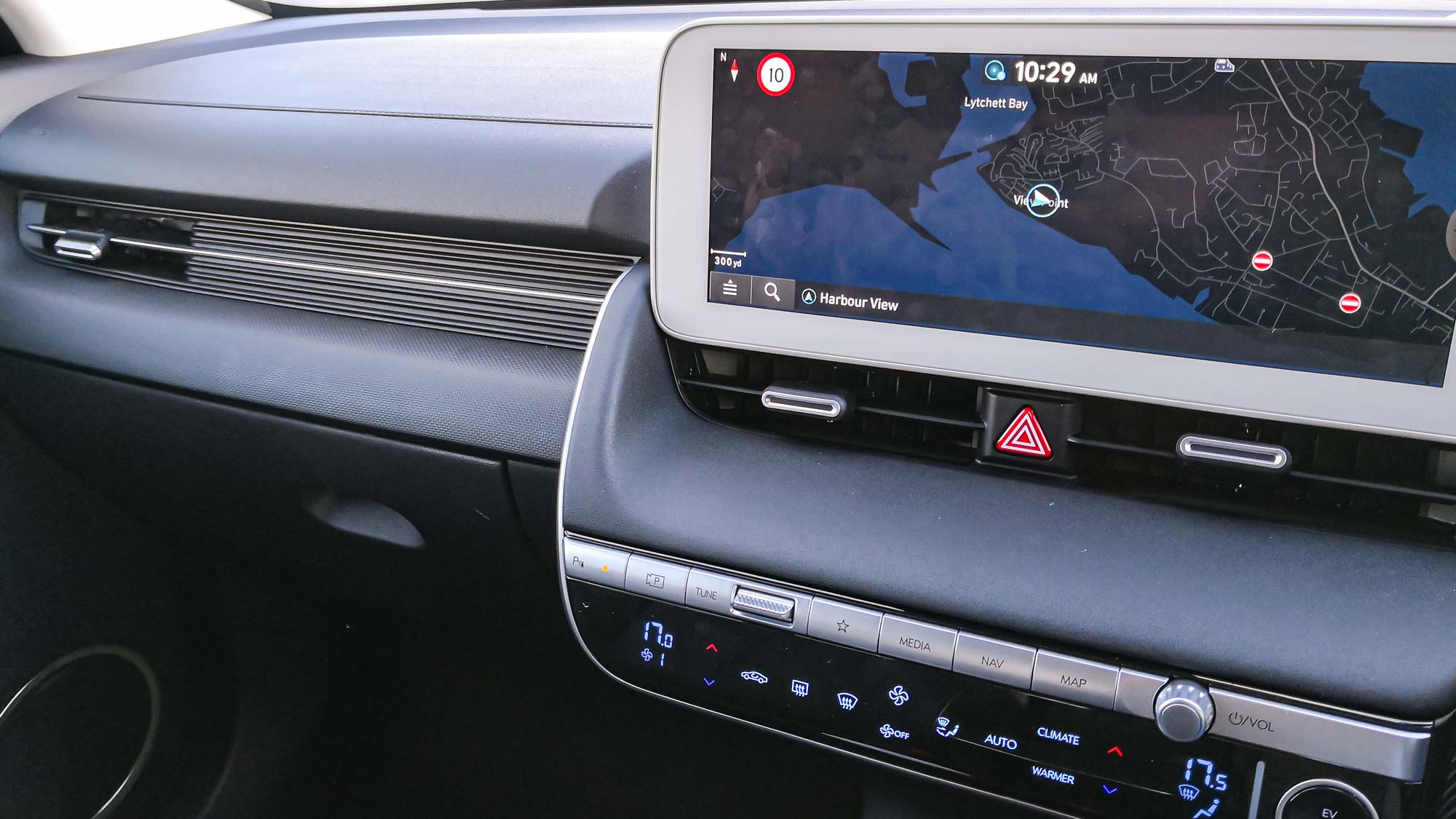
However, a lot of the action is to be found with the twin display arrangement that sits on the dash. There are digital dials behind the steering wheel, while the more centrally located screen – both are 12.3-inch rectangular designs that house a wealth of features and functions.

What’s great about the IONIQ 5 is you can make do if you prefer to just get in and go. You’ll need to acquaint yourself with the basic drive settings first obviously because, for example, the drive modes are selected using a steering column mounted selector. There’s not much to it though, and once you’ve got the gist of that this is very much a stop/go EV.
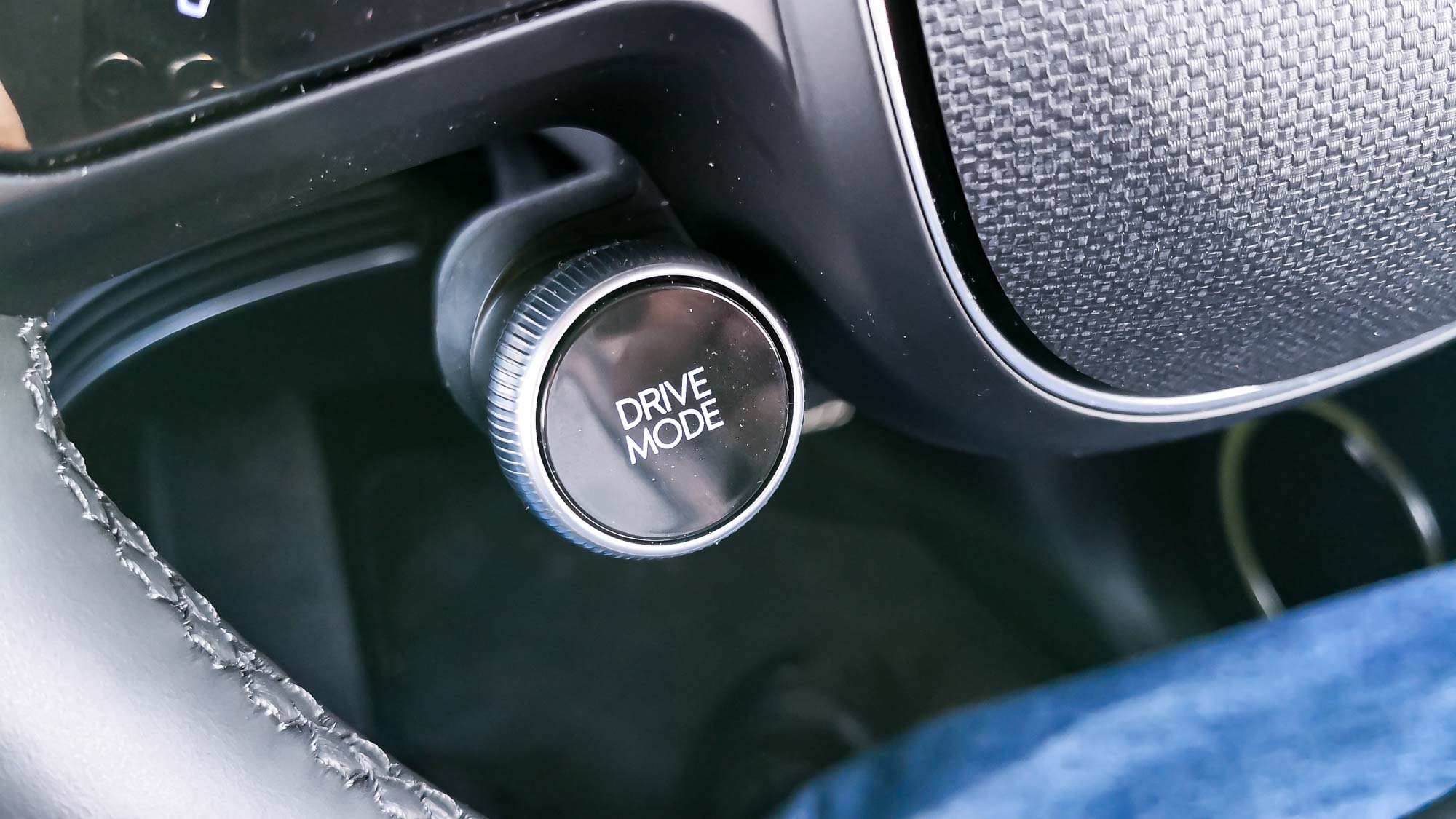
Naturally, you also have the option to adjust core drive settings, such as the amount of regenerative braking you desire using the paddle shift feature just in front of the steering wheel. It’s all very well thought out making the IONIQ 5 one of the easiest EVs out there for getting the most out of its potential.
The high-end model I drove also had a heads up display, which worked a treat, as did the Bose stereo that sounded impressive in the cavernous surroundings of the interior. There’s also Apple CarPlay and Android Auto while the wireless phone charging proved popular with any folks that came along for the ride.
Hyundai IONIQ 5: Range and Charging
Hyundai has also built in lots of very cool stuff where charging is concerned as well. It’s possible to use the IONIQ 5 Vehicle-to-Load technology, which effectively lets you use the car’s battery to recharge other things, like a laptop from one of the car’s interior power sockets. This is yet another nod to the practical stance of this all-electric machine.
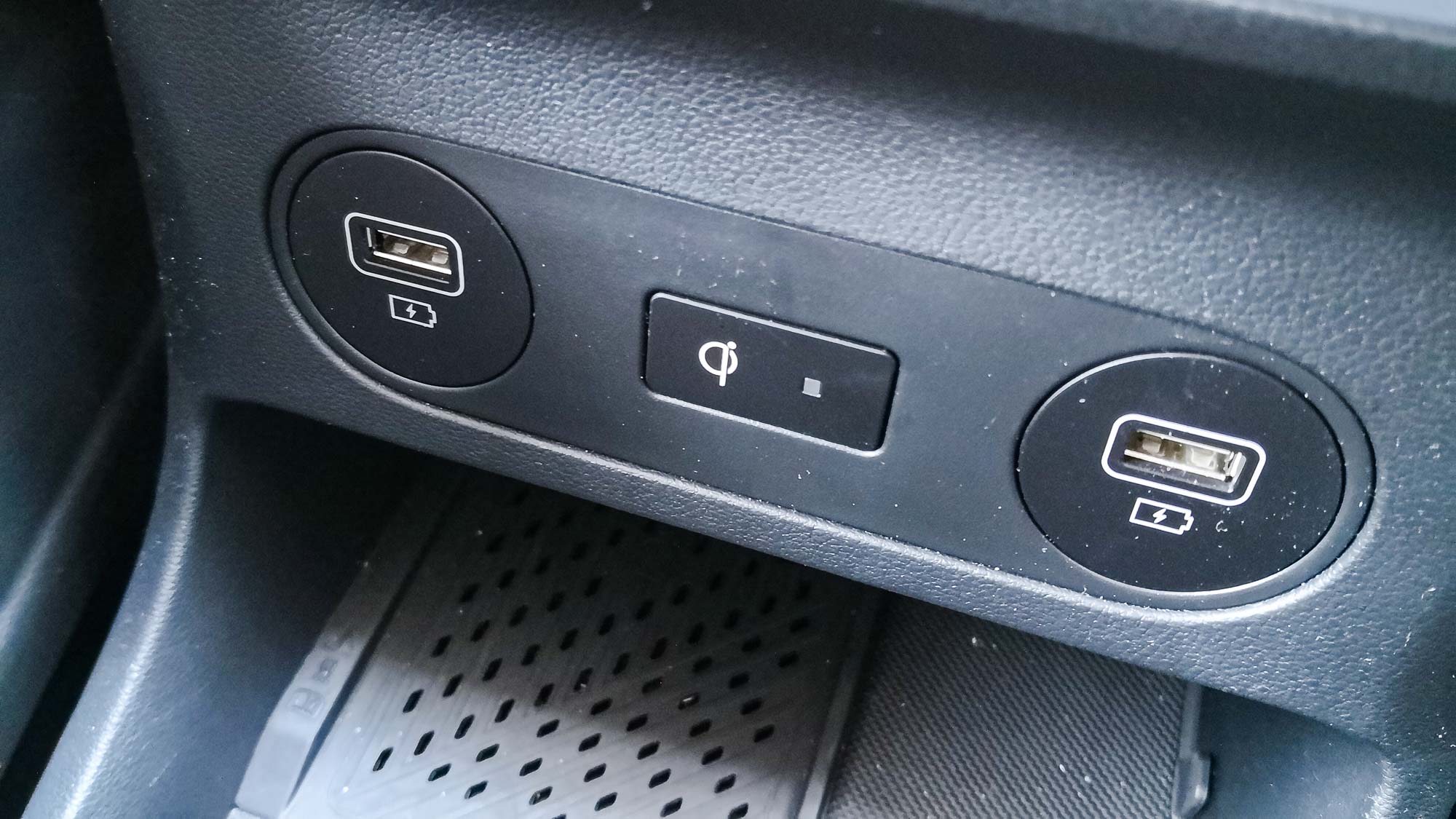
On top of all that, the recharging system of the IONIQ 5 is hugely impressive too. The car packs in an 800V battery system, which enables it to be charged via 350 kW chargers. Though such high-speed chargers are still few and far between, so admittedly, the tech is a bit ahead of the game. However this should mean the car is reasonably future proof too.

Find one of those 350 kW chargers and you can expect to get from 10% to 80% in under 18 minutes, which is seriously impressive. I found the charging procedure, even on more humdrum chargers to be swift and simple too, which is always a bonus when you’re talking EVs.
Hyundai IONIQ 5: Verdict
The Hyundai IONIQ 5 has left a really positive impression after spending a fairly brief amount of time in its company. There are the looks for starters, and because the car was designed on Hyundai’s dedicated EV platform means that everything looks like it’s in the right place. There’s no hotchpotch of ideas as you can get when existing cars are repurposed for all-electric use. It certainly looks as good as, if not better than VW’s ID.4.
Admittedly, the trunk space isn’t quite as spacious as the rest of the car, although it’s good enough unless you’ve got bigger things to squeeze in. However, fold down the rear seats and the IONIQ 5 becomes a different beast altogether, having its capacity tripled from18.7 cubic feet to around 56. More of that fantastic practicality on show, right there. Oddly there’s no rear wiper, which proves a little irritating if you’re driving in really bad conditions, but that’s a relatively minor downside.
Add it all together and the Hyundai IONIQ 5 is a really impressive bit of kit. Hyundai has set the bar particularly high this time, with smart design and an array of practical features. Not to mention the fact that it's especially fun to drive, and plenty of torque to add a little spice to the proceedings. All in all, it’s going to make the IONIQ 5 rather a hard act to follow.

Rob is a London-based freelance tech journalist covering EVs and car tech for Tom's Guide. He has worked at Microsoft and written for numerous tech sites including TechRadar, Gizmodo, ShortList and Fit&Well. When he's not working, he can usually be found out and about on one of his numerous ebikes.
